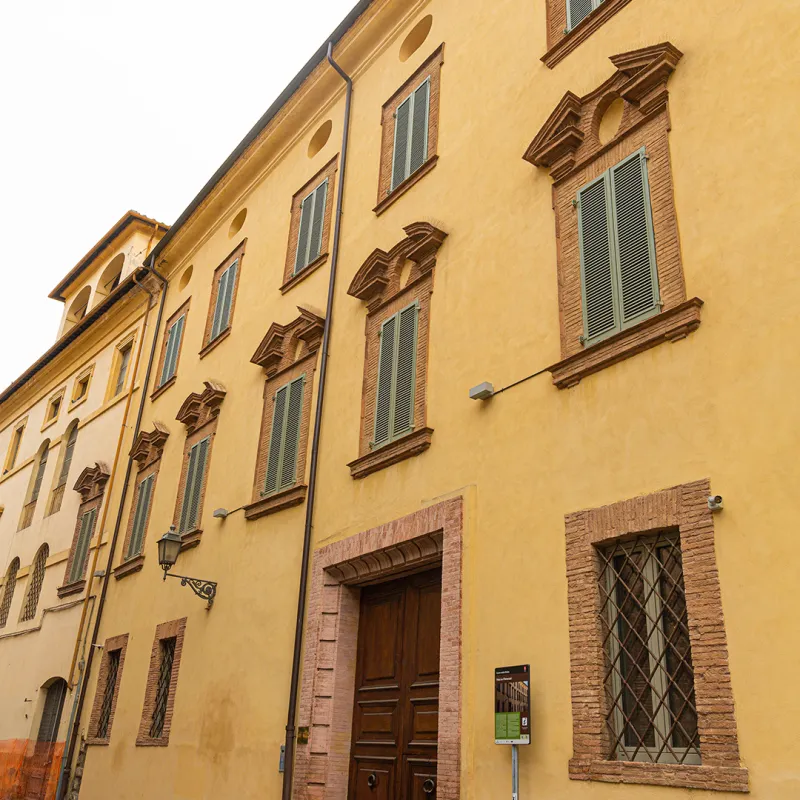Renaissance Terni
The Renaissance established itself in Terni with some outstanding buildings, many of which are still visible today, original or partially.
These include the 15th century courtyard of Palazzo Alberici, Palazzo Pierfelici with an early 16th century portal, Palazzo Spada (today’s town hall), designed by Antonio da Sangallo the Younger, and also the Bianchini-Riccardi, Mastrozzi-Magroni, Possenti, Pressio-Colonnesi, Sciamanna and Manassei buildings.
The Renaissance pictorial production is also quite remarkable, starting from the frescoes by Bartolomeo di Tommaso from Foligno representing the Last Judgment in the Paradisi chapel at St. Francis’s.
The Museum of Modern and Contemporary Art also houses a painting representing the Marriage of Saint Catherine by Benozzo Gozzoli (1466), a banner depicting the Crucifixion of Niccolò Alunno (1496), and works by Spagna, Piermatteo d'Amelia and Domenico Alfani.
Between the 16th and 17th centuries extensive works were carried out on the Cathedral and the basilica of St.Valentine was reconstructed.
In the 18th century many buildings, among which Manassei, Carrara, Fabrizi and Gazzoli, were renovated covering the original medieval stone structures and creating new openings.
THE STAGES OF THE ITINERARY

Headquarters of Terni's City Hall, commissioned by Michelangelo Spada, it originally consisted of two parts that were joined in the 18th century following radical renovation that gave the building its current structure.

Palazzo Rosci (or Rossi), now named Bianchini Riccardi, dates back to the 16th century. Attributed by some to Bramante, by others to Vignola or Sangallo, for now it remains without an "author".

The majestic palazzo which bears the name of the noble Gazzoli family who commissioned it at the end of the 18th century, was designed by the architect Andrea Vici, inspired by the architectural style of late Renaissance Roman buildings.

This aristocratic building, profoundly renovated in the 17th century, the century to which the frescoes on the main floor attributed to Girolamo Troppa also date, housed various educational institutions, the city's picture gallery (from 1964 to 1986) and the 'Briccialdi' Musical Institute. Finally, it was converted to private homes.

The palazzo, located on the corner of Via Cavour and Fratini, is an 18th-century reconstruction of one or more earlier buildings, probably from the 16th century.

The imposing volume of Palazzo Carrara, which for a long time was the residence of the Carrara family (one of the most illustrious families in Terni in past centuries), is the result of the fusion of several buildings, some of which were built in the second half of the 14th century.

The Cathedral of Terni is dedicated to Santa Maria Assunta and its actual appearance is the result of the reconstruction work carried out between the 16th and 17th centuries. A local tradition that has never been verified attributes the project to Gianlorenzo Bernini.

The Basilica of St Valentine is located about two kilometres from the centre of Terni, on the site of an ancient Christian cemetery, representing one of the most important examples of an early Christian necropolis in Umbria.

The Museum arises from the fusion of the Municipal Art Gallery, previously located at Palazzo Gazzoli and a new area dedicated to contemporary art.